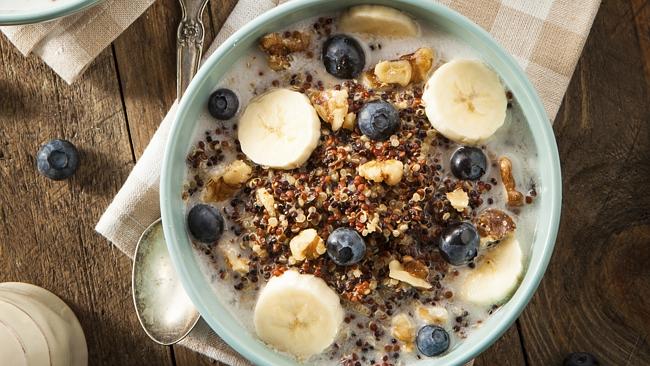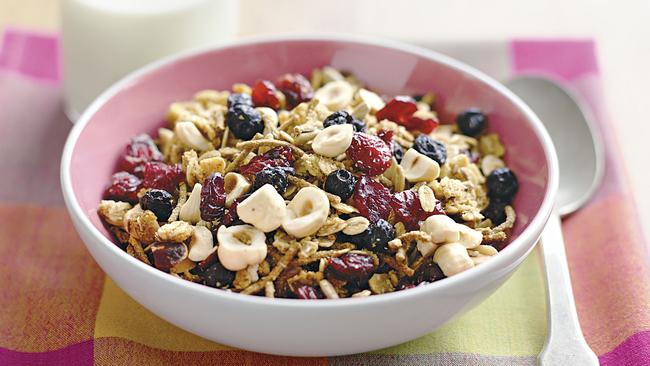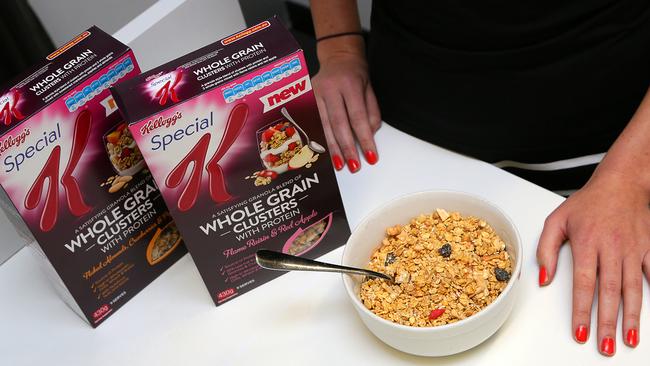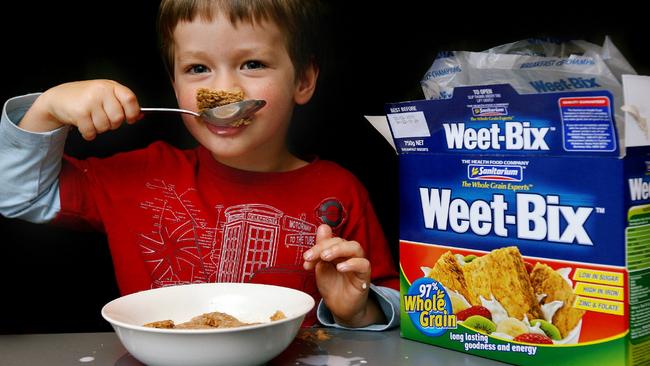What cereal should you actually be eating?
IT’S the most important meal of the day but couldn’t be more confusing. They all claim to have health benefits, but what cereal should you actually be eating?

Health
Don't miss out on the headlines from Health. Followed categories will be added to My News.
BREAKFAST is indeed very important and cereal makes for a fast, easy, and inexpensive meal. But navigating the supermarket to find a ‘healthy’ option is not a simple task. Wake up to the benefits and start your morning right with these tips with mind.
Fibre first
Besides fruit, vegetables and legumes, breakfast cereals are one of the easiest ways to boost your daily fibre intake — so make fibre one of the top priorities when making a better choice. Other than digestive benefits, a recent Harvard study that included over 300,000 participants found a diet high in cereal fibre reduced the risk of premature death from a range of chronic diseases, including heart disease, respiratory disease and diabetes. Most Australians do not consume enough fibre, with an average daily intake of 20—25 grams.
Tip: To help reach the recommended 30g of fibre each day (slightly less for children), choose a cereal that provides at least 7g per 100g.

Go the whole way
When it comes to grains, most people eat far too many of the refined type. Extensive processing of grains can leave very little in the way of nutritional value, including naturally occurring fibre, protein and antioxidants that work together in the body to promote health and wellbeing.
Tip: Look for a cereal made with at least 50 per cent wholegrain ingredients, such as whole wheat, brown rice, barley, rolled oats or triticale.
Unsweeten the deal
With sugar dominating the headlines, breakfast cereals sometimes get a bad wrap. But based on the latest Australian Health Survey data, breakfast cereals contribute only 3% of the sugar in Australian adults’ diets nationally. Sugar can come from ‘added’ sugar as well as sugars derived from natural sources, such as dried fruit (which provides fibre, vitamins and minerals).
Pay attention to added sugars, which we should only be consuming in moderation (no more than 10% of total kilojoules, or less than 13 teaspoons for an average Australian adult) each day.
Tip: Opt for less than 15g per 100g of or less than 25g per 100g of total sugar if cereal contains dried fruit.

Slash the salt (sodium)
Roughly 75% of the salt in our diets comes from processed foods. The good news is that many cereal manufacturers have already made a significant impact on reducing salt in their products. Sodium from breakfast cereal only contributes 2% of the salt in Australia’s diets (and less than 3% for children aged 2-18). A range of between 1600 mg and 2300 mg of sodium (equivalent to about 4-6 grams of salt) has been suggested for Australian adults (children need even less), however, most Australian adults have a daily salt intake of about 10 grams.
Tip: Read the label. Anything under 400mg per 100g is good.
Beneficial fats
Generally speaking, mueslis have a higher fat content due to the inclusion of nuts and seeds or how they are prepared (toasted or oven-baked). Again, check the ingredients to see whether the fat comes mainly from: nuts or seeds versus added fat. As for added fat, watch out for ingredients such as vegetable, coconut or palm oil which can increase saturated (unhealthy) fat levels.
Tip: Don’t fear fat, just watch the type. The lower ratio of saturated fat to total fat the better.
Protein power
Another health perk of a breakfast cereal comes from the milk or Greek yoghurt you add which provides bone-building calcium, as well as high-quality protein to help keep you full and also blunt the blood-sugar-raising effect of a meal. As well as providing a healthy source of fat, nuts and seeds also help to push up the content.
Kathleen’s picks
Muesli
Kellogg’s Five Whole Grain Muesli
Carman’s Original Fruit Free Muesli

Flake
Kellogg’s All Bran Wheat Flakes
Goodness Superfood Heart 1st
Kellogg’s Guardian
Be Natural Five Whole Grain Flakes
Oat-based
Uncle Toby’s Oats Multigrain
Goodness Superfood Traditional Barley + Oats
Clustered cereals
Kellogg’s Special K Wholegrain Clusters
Gluten free
Freedom Foods Active Balance Buckwheat & Quinoa
Brookfarm Porrij
Biscuit type
Uncle Toby’s Oat Brits
Kid’s cereals
Uncle Toby’s Shredded Wheat
Sanitarium Weet Bix for Kids
Kellogg’s Mini Wheats

Ready-made
Chia pod oats mixed berry
Kathleen Alleaume is a nutrition and exercise scientist. Follow her on Twitter @therightbalance
Originally published as What cereal should you actually be eating?







